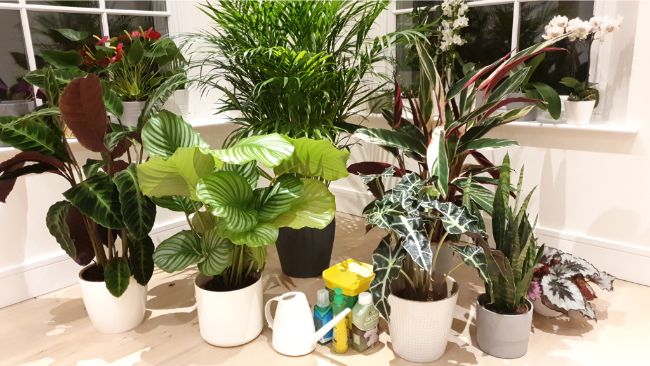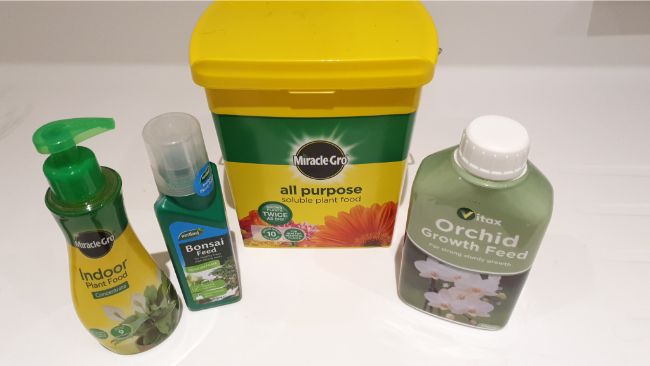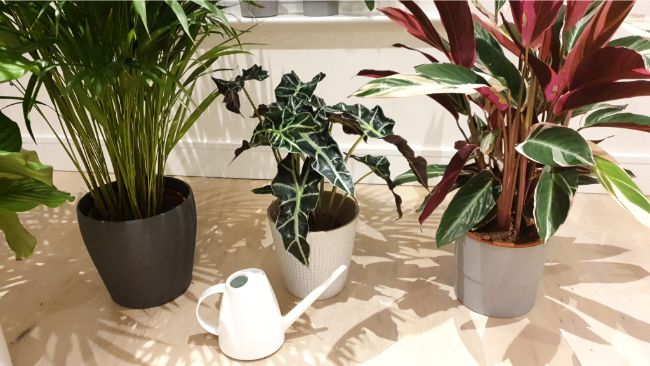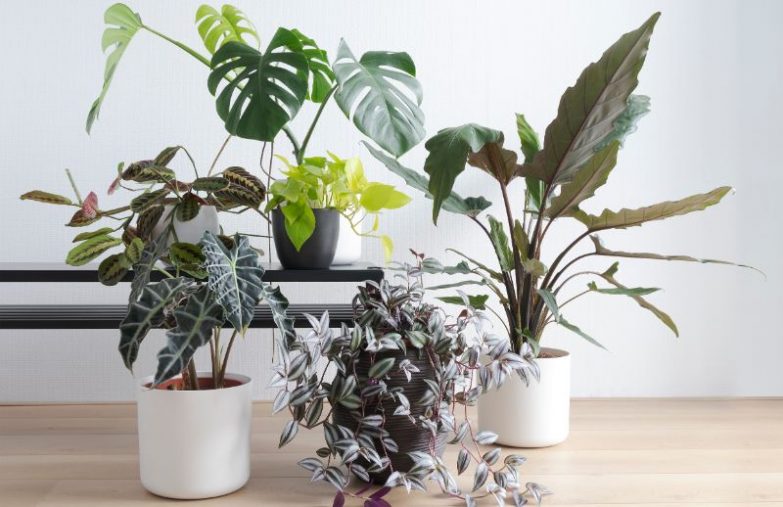Fertilizer can make a huge difference to the growth and health of your plants. But apart from following the instructions on the label and awaiting results, how does fertilizer work? This article will explain how fertilizers help plants to grow, what each of the individual components do, and how to use them safely and effectively.
How does fertilizer work? Fertilizer is a supplement containing nutrients that are essential for basic metabolic processes within plants. Fertilizer is applied to the soil or sprayed onto the leafy parts of the plant. The nutrients are then taken into the plant through their roots or leaves and drive all of the processes that go on within the cells.
Talking about fertilizer can become a lengthy topic, as it has many ins and outs, but it’s important to understand the basics about what fertilizer is, why plants need fertilizers, and how to choose and apply the best type of fertilizer for your needs. Knowing these fundamentals will help you use fertilizers correctly and get optimal growth from your plants.
What Is Fertilizer?
By definition, a fertilizer is a substance, whether natural or synthetic, that is applied to the soil or directly to plant tissues to supply one or more nutrients. The purpose of fertilizers is to supplement plant nutrition and promote plant growth.
Fertilizers come in many different forms ranging from animal waste (i.e. manures), to highly decomposed kitchen and yard waste, to a plethora of commercially available products.
Why Do Plants Need Fertilizer?
No matter what type of plant you are growing, it has certain nutrients that it absolutely needs for plant growth. Each of these nutrients is needed in varying amounts, and has a range in which optimum growth occurs; too little causes deficiency problems and too much causes toxicity.
These nutrients aid in the basic cellular functions in the plant, driving growth, and are known as plant essential nutrients. If any of the essential nutrients are found in limited quantities or are missing completely, it will affect overall plant growth, even if all of the other nutrients are available in adequate amounts.
These plant essential nutrients are found naturally in the soil, in varying quantities depending on the parent material, organic matter content, local climate, etc. In many cases, nutrients are also added to commercial potting soils during manufacturing.
Over time these nutrient levels – in both garden soils and potting mixes – decrease or become depleted because they are taken in and used by the plants or they are leached out of the soil. When these plant essential nutrients reach low levels it becomes necessary to add them back into the soil in the form of fertilizers to achieve optimal plant growth.
I’ve written another article that covers how to fertilize indoor plants and all the information you need to choose an appropriate fertilizer for your plants.
How Does Fertilizer Work: The Role Of Individual Nutrients
The plant essential nutrients are broken down into different classifications based upon the relative amount needed by plants. In the most simple classification, nutrients are known as either macronutrients or micronutrients.
Macronutrients
Needed in larger amounts within plants (hence, the “macro”), macronutrients are most often involved in major processes such as photosynthesis and respiration or serve as key structural components within the cells. Plant essential macronutrients include nitrogen, phosphorus, and potassium – also known as the primary macronutrients – and calcium, magnesium, and sulfur (the secondary macronutrients).
What Does Nitrogen Do For Plants?
Nitrogen is probably the most well-known nutrient needed for plant growth, and rightfully so since it is needed in the highest quantity. Nitrogen’s primary role is regulating vegetative growth. It is also a component of amino acids and chlorophyll and helps complete many enzymatic reactions in the plant.
What Does Phosphorus Do For Plants?
Phosphorus is a structural component of DNA and RNA, which carry genetic information in the cells. Because of this, it is important in root growth and flowering — both processes where new cells are formed and differentiated into specific plant parts.
What Does Potassium Do For Plants?
Potassium has a more indirect role within the plants compared to nitrogen and phosphorus. Instead of functioning as a structural component, potassium activates enzymatic reactions that are necessary for overall plant health and growth.
What Does Calcium Do For Plants?
Calcium, in the form of calcium pectate is an essential component of cell walls, helping them form and remain strong. Calcium is also involved in numerous important enzymatic and metabolic processes. When calcium isn’t available in high enough amounts new growth will be irregularly shaped or disfigured. Calcium deficient plants are also less resistant to heat, drought, and pests.
What Does Magnesium Do For Plants?
Magnesium’s main function is to help plants photosynthesize. It is needed for many of the enzymes involved to function properly but its most important role is serving as the central, structural molecule forming chlorophyll.
What Does Sulfur Do For Plants?
Compared to the other macronutrients, sulfur is only needed in small amounts but that doesn’t reduce its importance. As metabolic processes occur within the plant sulfur is broken down into forms used to build organic molecules such as vitamins and the odoriferous compounds well known in onions and garlic.

Micronutrients
Plant essential micronutrients – iron, manganese, copper, molybdenum, zinc, nickel, boron, and chlorine- are needed in much smaller quantities within plants, but their functions are just as important as macronutrients needed in larger amounts. Many of them activate enzymatic reactions so it’s important your plant receives the correct ratio of micronutrients when they are fertilized.
What Does Iron Do For Plants?
Iron is a component of many enzymes that play a role in chlorophyll production, making it essential for photosynthesis. It also influences the transfer of energy within the plant and aids in lignin formation, and both nitrogen reduction and fixation.
What Does Manganese Do For Plants?
Manganese helps to produce chloroplasts, the organelles within plant cells where photosynthesis is carried out. It also influences seed germination and crop maturity.
What Does Copper Do For Plants?
Copper activates enzymes involved with lignin production; lignins provide structure and rigidity in plant cells. It is also essential in photosynthesis, plant respiration, and the metabolization of carbohydrates and proteins.
What Does Molybdenum Do For Plants?
Molybdenum is an essential component of two different enzymes used in nitrogen metabolism, the process that takes nitrate and through a series of steps converts it into ammonia to be used for amino acid synthesis. It is also critical for symbiotic nitrogen-fixing bacteria in legumes to allow them to utilize nitrogen from the atmosphere for plant use.
What Does Zinc Do For Plants?
Zinc is a component of many enzymes and also aids in plant hormone balance and activity, especially that of auxins.
What Does Nickel Do For Plants?
Nickel is similar to molybdenum in its function, aiding in both nitrogen metabolism and nitrogen fixation. Instead of converting nitrate, nickel is a component of enzymes that convert urea nitrogen to ammonia. Of all of the essential nutrients, it is required in the smallest amount.
What Does Boron Do For Plants?
Boron is important is the movement of sugars within the plant, amino acid production, cellular division, flowering, and fruiting.
What Does Chlorine Do For Plants?
Chlorine helps to regulate the turgor in plant leaves, maintaining pressure within the plant cell components to keep the cell walls rigid. It also helps plants resist diseases and aids in photosynthesis.
Choosing A fertilizer
Trying to choose a fertilizer to use on your plants can seem like an incredibly daunting task. A quick walk through the local garden center’s fertilizer aisle may have you scratching your head in wonder at the shelves and shelves of available options.
To help make this process less daunting, let’s first talk about fertilizer labels, and then we will get to explaining the different types.
Understanding A Fertilizer Label
When you look at the label of fertilizers one of the first things you may notice is a set of three numbers, which is known as the N-P-K ratio. Since nitrogen, phosphorus, and potassium are needed in higher amounts than the other plant essential nutrients they are used as a universal labeling method. This ratio allows consumers to easily compare products to one another since it tells the percentage, by weight, of the three main nutrients in the product.
To explain better…let’s consider a 10-10-10 fertilizer formulation — nitrogen, phosphorus, and potassium all make up 10% of the final product weight. So a 10-kilogram bag contains 1 kilogram of nitrogen, 1 kilogram of phosphorus (in the form of P2O5), and 1 kilogram of potassium (in the form of K2O).

Fertilizer Types
How does fertilizer work differently depending on the formulation used? Once you understand what the numbers mean on the label it makes choosing a specific one much easier. The best way to approach this is to start off by thinking about the following basic parameters, and determining what works best for your plants and your personal preferences.
To make it easy we’ll start with some very broad concepts and then work towards ones that are more specific…
Conventional Versus Organic
First off, let’s talk about conventional versus organic products, a topic that gardeners can be very passionate about.
Conventional fertilizers – also known as inorganic – are typically formulated using synthetic, or manmade materials (although they can contain naturally occurring materials as well).
Benefits Of Conventional Fertilizers:
- Specially formulated so nutrients are quickly available for the plants. This means plant deficiencies are fixed quickly, reducing the long term effects on your plants.
- Relatively inexpensive and readily available because of mass production.
Drawbacks Of Conventional Fertilizers:
- Since nutrients are quickly available they can leach out of the soil quicker, potentially contaminating water supplies and causing environmental problems.
Organic fertilizers, on the other hand, are completely made from naturally occurring materials. Organic products typically consist of the waste products of living organisms or the broken-down remains of once-living organisms.
Benefits Of Organic Fertilizers:
- Organic fertilizers are considered to be more environmentally sustainable. They require less energy for production, resulting in less greenhouse gas emissions from manufacturing.
- After application, microorganisms in the soil break the fertilizer components down, releasing the nutrients for plant uptake. At this time organic matter is also added to the soil, improving the soil structure and increasing water retention in the soil.
Drawbacks Of Organic Fertilizers:
- Labeling laws dictate the N-P-K ratio listed on the product only includes the nutrients immediately available for plant uptake. Many organic fertilizers have components that are released over time; therefore their ratios are lower and many consumers think the products aren’t as effective because they have fewer nutrients.
Quick-Release Versus Slow-Release
Now let’s move onto nutrient availability. The difference in quick-release and slow-release fertilizers is when the nutrients are available for plant uptake.
Quick-release fertilizers contain nutrients that are immediately available for plant uptake. As I mentioned when discussing conventional fertilizers, this is good in that it helps to quickly correct deficiencies but also increases the chance nutrients will leach out of the soil into water sources. Quick-release fertilizers are usually conventional, or inorganic products.
Slow-release fertilizers contain ingredients that break down slowly, providing a gradual source of nutrients to plants over time. Organic fertilizers are slow-release, but conventional fertilizers can be formulated to slowly release nutrients as well.
Granulated Versus Water soluble
Granular fertilizers are made by mixing dry nutrient sources together and then forming the product into granules for easy application. The end product can be conventional or organic depending on the ingredients used. Conventional granular fertilizers can be quick-release or slow-release formulations. also known as dry fertilizers.
Liquid or water-soluble fertilizers are manufactured in concentrations that are easily water-soluble. You dilute or dissolve the concentrate in water at the correct ratio and then use this diluted solution to water your plants. They mix easily and thoroughly making it simple to fertilize plants, but they are not available in slow-release formulas.

All-Purpose Versus Specialty
Lastly, within the classifications of fertilizers, there are two types left to choose from: all-purpose and specialty fertilizers.
All-purpose fertilizers are made to meet the needs of most plants and are a good option during a typical growing season if you don’t have outlying growing conditions or atypical plants. They usually contain all three of the key nutrients (N, P, and K) at comparable levels to meet basic plant needs.
Specialty fertilizers are designed to meet the needs of specific types of plants (acid-loving, succulents, orchids, etc.) or may have one nutrient in a considerably higher amount. Specialty type fertilizers are helpful for plants that have certain micronutrient needs that aren’t met by all-purpose plant food, or if they require higher amounts of a given nutrient because of the way the plant grows.
Applying Fertilizer
Fertilizing your plants is meant to aid, and improve plant growth when there is a lack of nutrients in the soil or potting mix. It isn’t a cure-all for everything that ails your plant and needs to be done carefully.
If applied incorrectly, fertilizers can cause serious problems, and possibly permanently damage your plants. When plant growth is slowed or stunted it’s important you assess your plant for other issues such as watering, lighting or temperature problems, and visually check for insect pests or diseases. Once you have ruled out these other possible causes of poor growth it’s then time to try fertilizing your plants.
Keep in mind though, the plant essential nutrients are needed by plants within a specific range, and it’s important you don’t over-fertilize and “feed” them too much.
Basic Guidelines
There isn’t a one-size-fits-all rule for fertilizer application because of the wide variation of products available for use and their range of nutrient concentrations. Application rates and frequency depends upon the product itself while you keep in mind the following basic tenants:
- Apply fertilizers at the rate and frequency instructed on the product label, or even at a lesser dosage/timing. This is not the case where if a little of something is a good thing, even more is better. Over-fertilizing your plants is usually more harmful than not giving them enough nutrients.
- Apply fertilizers when the plants are actively growing, and not dormant. When temperatures drop during the cooler, winter months plant growth slows down and no fertilizer is needed.
- Always water fertilizers into the soil well after application, regardless if your plants are in-ground or planted in containers.
- Do not apply fertilizers when your plants are stressed due to recent transplanting/repotting, or they are recovering from insect or disease problems. Allow them a couple of weeks after such an event before you begin fertilizing again.
Special Considerations
How does fertilizer work in different situations? Certain growing conditions necessitate some special considerations when it comes to applying fertilizers. This helps to ensure you don’t damage your plants and they receive the full benefits of the application.
In-Ground Planting
- Maintain proper soil pH. The pH of the garden soil greatly impacts nutrient availability. As the soil pH becomes more acidic or more basic/alkaline many of the macronutrients become unavailable for uptake, creating deficiencies; at the same time, the micronutrients become more available, increasing the chances of micronutrient toxicity.
Potting Soil
- Wait for 4-6 weeks after planting your container plants to begin fertilizing. Many commercial potting soils have fertilizer added during manufacturing; fertilizing before the nutrients are depleted from the growing media will cause toxicity problems.
Container Gardening
- Fertilize container plants at a lower dosage than the label recommendation, more often. Potted plants need to be watered more frequently than garden soil. This frequent irrigation leaches the nutrients out of the root zone faster, requiring replenishment more often.
Herb Gardening
- Fertilize your herbs, whether container-grown or planted in-ground, lightly and avoid fertilizers high in nitrogen. Nitrogen promotes vegetative growth, and too much fertilizer makes plants grow too quickly thus reducing the concentration of oils in the herbs’ leaves, subduing the flavor.


